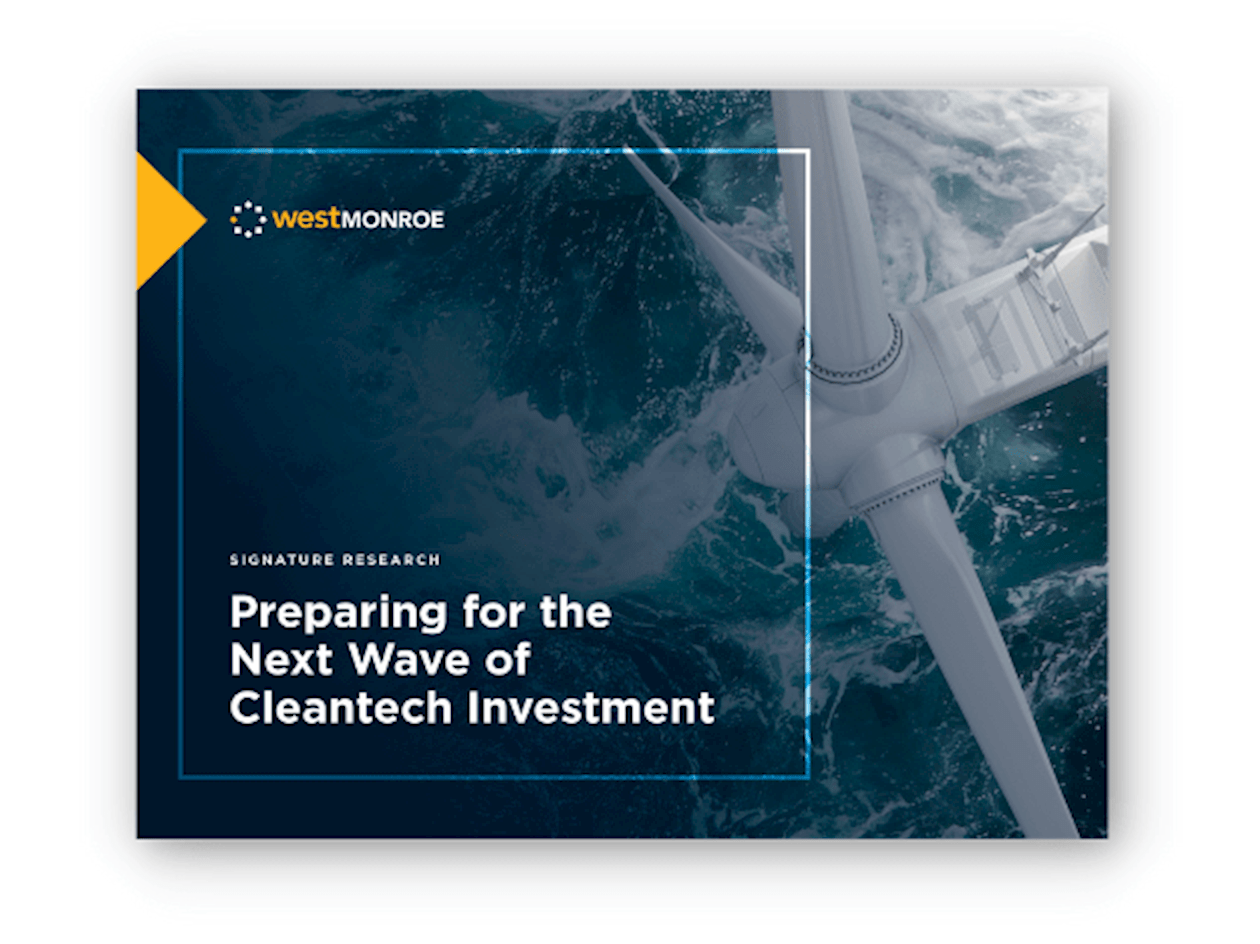Preparing for the Next Wave of Cleantech Investment
Private equity and corporate development execs are seeing heightened enthusiasm for M&A opportunities in cleantech
Sustainability and clean energy have been gaining prominence for the past two decades, but today’s complex geopolitical dynamics and rapid technological advances have added new dimensions to the road ahead.
Investment in cleantech alongside traditional carbon-based sources is expected to continue rising—supported in the U.S. by the monumental Infrastructure Investment and Jobs Act and the Inflation Reduction Act.
To better understand the evolving trends in the energy sector and the future of cleantech investment, we surveyed 200 private equity (PE) and corporate executives to find out more. This survey provides an in-depth analysis of the latest trends in cleantech investment, exploring the opportunities and challenges facing investors in this rapidly evolving sector.
The report focuses primarily on the drivers and barriers to success in the cleantech industry. It provides valuable insights into the current state of renewable energy and attendant technologies, the challenges of integrating and creating value from cleantech solutions, and the target sectors and markets that are driving capital into the sector. Amid so much change, investors must quickly find their bearings to capitalize fully on this generational opportunity as countries around the world move to decarbonize their energy mix.
Key Takeaways
- Dry powder stores are expected to be a major catalyst for deal activity.
A third of respondents—easily the largest share—believe the single most important driver of increased investment in cleantech is the scale of ESG-related funds ready for deployment.
- Regulatory moves are increasing deal appetite.
Three-quarters of respondents say recent public policy and regulatory developments around energy (the Inflation Reduction Act, the Infrastructure Investment and Jobs Act) have amplified their appetite for clean energy M&A.
- European investors are anticipating ESG standards that apply to dealmaking.
More than half of respondents (54%) expect a functional, uniform set of standards for ESG disclosures related to M&A in the next two to five years. This increases to 61% among European respondents and drops to just under half (47%) of US-based respondents.
- Higher borrowing costs and tighter liquidity conditions are set to bite.
The greatest challenge to the growth and long-term success of cleantech companies is the difficult financing environment, a primary concern for 22% of respondents.
“Cleantech has emerged from a niche infrastructure fund to an area where many investors are evaluating the themes and opportunities across each of their industry vertical teams that will benefit from the growth, tax advantages, and clean energy tailwinds,” said Keith Campbell, a senior partner in West Monroe’s M&A practice.

Preparing for the Next Wave of Cleantech Investment
Methodology and Respondent Profile
In Q1 2023, Mergermarket surveyed 200 senior executives via phone with expertise in the energy space to understand the appetite and drivers for investments in the cleantech space both now and in the future. Half of respondents were based in the US, and half in Europe, and were drawn equally from PE firms and corporates.
All respondent organizations who were qualified for to take the survey had acquired or sold at least one company in the cleantech space (i.e., the investment asset class, technology, and business sectors, which include clean energy, environmental, and renewable or green, products and services) over the last three years and intend to acquire or sell at least one over the next three years. The survey included a combination of qualitative and quantitative questions. Results were analyzed and collated by Mergermarket. All responses are anonymized and presented in aggregate. Whenever statically relevant, responses are also split by region or type of respondents.
Respondents by type:
-
Respondents from PE firms: 50%
- Firms with AUM between $250MM - $1B: 16%
- Firms with AUM between $1B - $5B: 17%
- Firms with AUM exceeding $5B: 17%
-
Respondents from corporations: 50%
- Organizations with annual revenues of $250MM to $1B: 18%
- Organizations with annual revenues of $1B to $3B: 10%
- Organizations with annual revenues exceeding $3B: 22%
-
Respondents by size
- $250MM - $1B: 34%
- $1B - $3B: 27%
- $3B or more: 39%
- Firms with AUM between $250MM - $1B: 16%
- Firms with AUM between $1B - $5B: 17%
- Firms with AUM exceeding $5B: 17%
- Organizations with annual revenues of $250MM to $1B: 18%
- Organizations with annual revenues of $1B to $3B: 10%
- Organizations with annual revenues exceeding $3B: 22%
- $250MM - $1B: 34%
- $1B - $3B: 27%
- $3B or more: 39%






